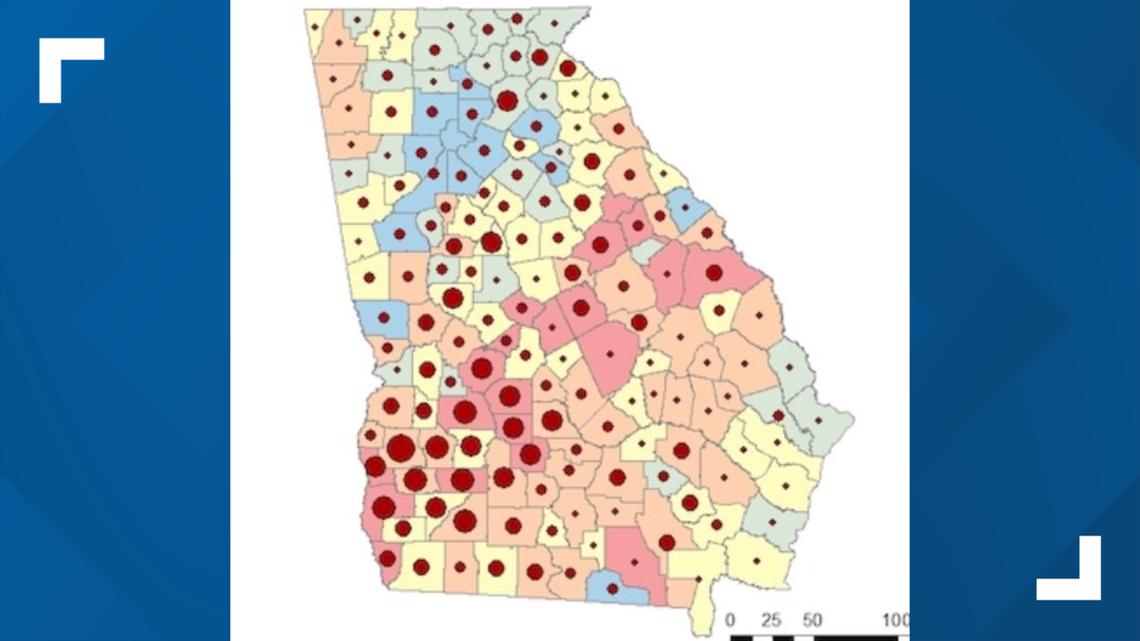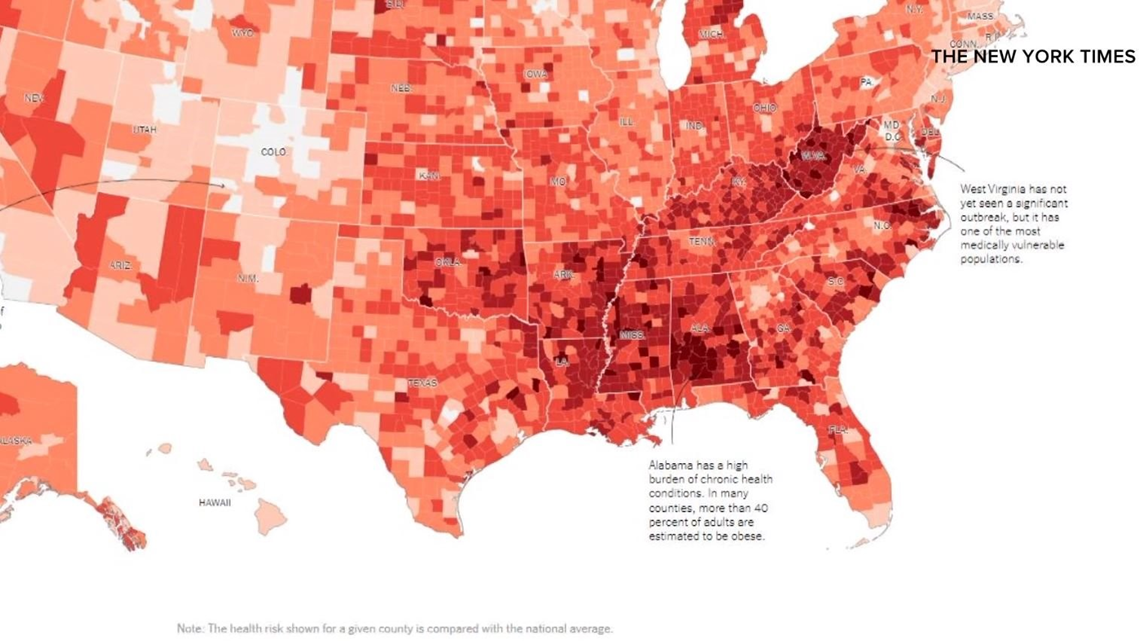ATHENS, Ga. — Researchers with the University of Georgia’s College of Public Health are notifying state and local health officials that the coronavirus is likely to continue to attack regions and populations in Georgia that have the poorest, overall health, and that focusing resources on those areas can minimize further outbreaks.
The researchers are with the College’s Economic Evaluation Research Group.
They are looking at underlying health conditions in each of Georgia’s 159 counties, and mapping which counties have the highest incidents of heart disease, obesity, diabetes and hypertension, as well as the highest populations of minorities, elderly, and low income.
When they compiled a state map that shows those counties, the map matched perfectly with the maps of the state that show the counties that are hardest hit by COVID-19 infections and deaths—particularly in southwest Georgia. That part of the state has the highest percentages of coronavirus cases compared to populations.
RELATED: What does our future look like after the pandemic? Experts provide reassurance based off history


The correlation between various underlying conditions and the spread of the coronavirus, has been understood for months, but, "Just bringing these two data sets together onto a mapping tool is useful and powerful," said the project's director, Dr. Janani Thapa.
"All we have done here is nothing fancy, but very helpful.," explained Dr. Thapa.
The “vulnerability index” map is a picture, by the numbers, of the virus doing the most damage to the weakest patients.
“We have pockets [in the state] where the risks are higher and, hence, we need to be extra vigilant on how we practice and how we are following all the mitigations,” said Dr. Thapa. “So where risk factors are more prominent, and we have vulnerable groups, we need to be even more careful” to help them."
Dr. Thapa said the mapping project can help public health officials see where the virus will continue to be hardest to stop.
“There are certain communities that are more vulnerable, and those communities might need a little, extra resource, extra focus,” she said. “These counties are really the vulnerable counties. And not all counties are seeing higher incidents. But there are counties that we really need to look out for, that have vulnerable populations.”
It’s the same across the rest of the South.
The New York Times just published its own, nationwide research, mapping the areas where the virus is raging. Those areas are communities with the poorest health, and they are in the South-- potentially posing a continuing threat to everyone.


“You know, whatever happens in my neighboring county affects me, eventually,” said Dr. Thapa. “It makes it even more important to address the overall health of these counties…preventing cardiovascular disease, for example, is what we want to do in the future.”
Her team has published “vulnerability” maps for March and April, and will be publishing the May map in early June.
11Alive is focusing our news coverage on the facts and not the fear around the virus. We want to keep you informed about the latest developments while ensuring that we deliver confirmed, factual information.
We will track the most important coronavirus elements relating to Georgia on this page. Refresh often for new information.

